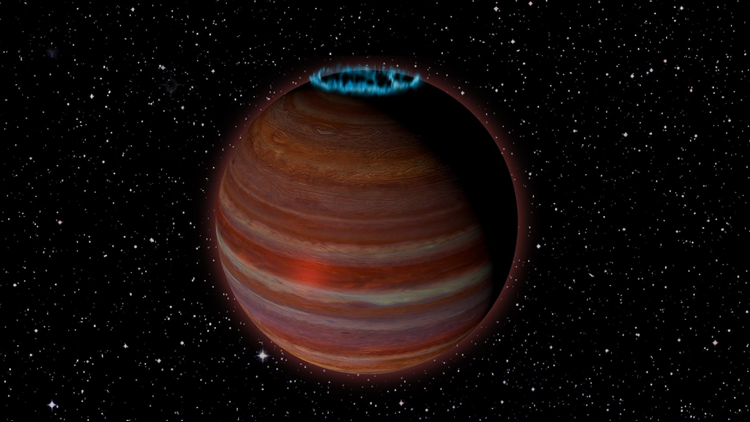A 200-million-year-old planet-sized object 20 light-years from Earth is being referred to as a "magnetic powerhouse."
According to a release from the National Radio Astronomy Observatory (NRAO), the discovery of the object marks the "first radio-telescope detection of a planetary-mass object beyond our solar system."
The strange object, being called SIMP J01365663+0933473, is roughly a dozen times bigger than Jupiter, the largest planet in our solar system, and has a magnetic field 200 times stronger than Jupiter's.
To put that into perspective, Jupiter's magnetic field is 16 to 54 times stronger than Earth's.
The object, which scientist say is on the boundary between a planet and a brown dwarf, is said to be a "surprisingly strong magnetic powerhouse."
The release from the NRAO said it was a “rogue,” meaning it's "traveling through space unaccompanied by any parent star."
The study was published in the Astrophysical Journal and led by Melodie Kao, a Hubble Postdoctoral Fellow at Arizona State University's School of Earth and Space Exploration. She was a graduate student at Caltech during the time of the study.
“This object is right at the boundary between a planet and a brown dwarf, or ‘failed star,’ and is giving us some surprises that can potentially help us understand magnetic processes on both stars and planets,” Kao said in the release from the NRAO.
Brown dwarfs, according to the NRAO, are objects too massive to be planets and not massive enough to be stars. Though how they are caused is "unclear," some brown dwarfs have strong auroras like those seen in the giant planets of our solar system.
According to the NRAO release, the object was first detected in 2016. At that time it was believed to be a lot older and a lot more massive.
Scientist later discovered SIMP J01365663+0933473 was relatively young and "so much less massive" than initially thought. Meaning, it could be a "free-floating planet."
SIMP J01365663+0933473 has a surface temperature that's more than 1,500°, according to the release.
Kao called the object "exciting."
“Studying its magnetic dynamo mechanisms can give us new insights on how the same type of mechanisms can operate in extrasolar planets — planets beyond our Solar System," Kao said in the NRAO release. "We think these mechanisms can work not only in brown dwarfs, but also in both gas giant and terrestrial planets."



